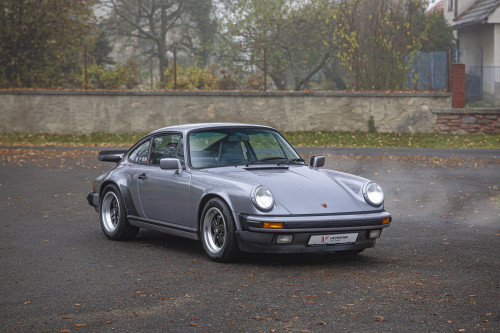Introduced in 1993 for the 1994 model year and in time for the 911’s 30th anniversary, the 993 would be the very last of the air-cooled Porsches before the company moved on to the water-cooled 996 for the New Millenium, a step that nobody would have expected a generation earlier and one that frustrated Porsche-philes. It was a hugely important car for Porsche that came at a formative, turbulent time. By the mid-1990s, the front-engined cars were all gone and there was a brief time – the 1996 model year – that the Boxster hadn’t arrived yet and the 993 was the only model in Porsche’s lineup.
The 993 replaced the 1989-94 version of the 911 called the 964. The 964, despite its strengths and improvements over the classic 911, was both heavier and more expensive to build than its predecessor. It also received criticism for its rear suspension, which was mounted to the body and juddered noisily under hard acceleration. Porsche even considered dropping the 911 model altogether during the 964’s production run. After putting together a 20-page paper in 1990 that defined what exactly a Porsche was, however, the company bigwigs decided that the 911 was indispensible and actually the backbone of the company. Work on an all-new car commenced.
As for styling, it was an all-new look while still unmistakably 911. Styled by Englishman Tony Hatter, it had wide, muscular bulges in all the right places, and the lower front fenders meant that it was the first 911 in which the drivers couldn’t see them from the cockpit. The body had a drag coefficient of 0.33, and while this was technically less aerodynamic than the 964, it also reduced lift at speed.
As for power, Porsche stuck with the tried and true and set about further improving the 964’s flat-six. Porsche redesigned the bottom end, added hydraulic self adjusting valve clearance and completely redesigned the exhaust.
Front brakes were also enlarged, a limited-slip differential was optional, and overall the 993 was 20 percent torsionally stiffer than the 964. Because the all-wheel drive 964 had made up about 20 percent of orders, the system was further improved in the 993, and the Carrera 4 system only added 100 pounds to a two-wheel drive version.
Reception for the 993, which was admirably priced cheaper than its predecessor, was immediate and enthusiastic. Motor Sport succinctly proclaimed “this is by far the best 911 so far” and Car and Driver remarked that “this is the first 911 that’s truly chuckable, and you would have to do something stupid to get into trouble…all the involving intricacies of the chassis’s personality are still there to be savored.”
The very last air-cooled 911 was a 1998 Mexico Blue Carrera 4S that was sold to Jerry Seinfeld, and it marked the end of an era. Porsche had built 410,348 air-cooled 911s before moving on to the somewhat unloved water-cooled 996.
The 993 is collectible for a lot of reasons. It’s not just that it’s the last air-cooled car. It’s the blend of classic 911 looks, heritage and sound with modern technology and conveniences. Many consider it to be the best looking of all 911s as well, and it’s certainly one of the most rewarding cars to drive, even if some of the newer 911s are quicker.
993s are mostly without the potentially catastrophic faults of some later Porsches. These are solidly built cars aided further by the fact that they aren’t yet old enough to have suffered severe neglect.
This Belgium first delivery car is finished in Iris Blue metallic paint with Individual Design Flamenco Red extended Leather interior and factory spec colour coded wheels. The option list includes a Limited Slip Differential, Traction control, Blaupunkt sound system and many more options.
This car comes already for a second time to our auction platform for sale.
| Production date | 08.06.1995 |
|---|---|
| Body Type | Coupe |
| Engine | 3.600 ccm, 272 PS, flat-6 |
| transmission | Manual |
| Steering | Left Hand Drive |
|---|---|
| Layout | Rear Wheel Drive |
| Color - exterior | Iris Blue |
| Color - interior | Flamenco Red |
| Miles/Kilometers shown | 196.508 kms |
|---|---|
| Chassis / VIN | WP0ZZZ99ZRS314890 |
| Location - Country | Czech Rep. |
| Location - City | Prague |
2-door coupe body type; RWD (rear-wheel drive), manual 6-speed gearbox; gasoline (petrol) engine with displacement: 3600 cm3, advertised power: 200 kW / 268 hp / 272 PS (ECE), torque: 330 Nm; characteristic dimensions: outside length: 4245 mm, width: 1735 mm, wheelbase: 2272 mm; reference weights: base curb weight: 1370 kg; top speed: 270 km/h (168 mph) (declared by factory); accelerations: 0-60 mph 5.3 s, 0-100 km/h 5.6 s (declared by factory)

Písek, Czechia

Jablonec nad Nisou, Czechia

Jablonec nad Nisou, Czechia

Písek, CZ

Písek, CZ

Písek, CZ